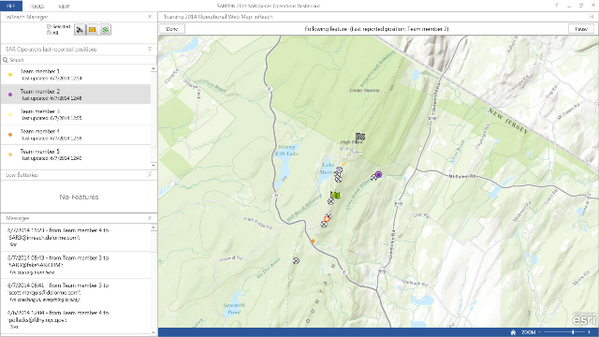Read the report and access the final agenda, presentations, etc. at: http://wisarandgis.blogspot.com/2015/11/sargis7-report.html
To Register: http://events.r20.constantcontact.com/register/event?oeidk=a07ebj3nub834a6869b&llr=nplxpbdab
Where: Columbia College in Sonora, CA
When: November 12-15, 2015
Cost: Free
Cost: Free
Workshop: The workshop will include a 1.5 days of hands-on training with ArcGIS Desktop (MapSAR_Ex / IGT4SAR) along with GPS field exercises. There will also be a lesson on how to use the free ArcGIS Explorer Desktop app for basic SAR Mapping (SAR Explorer) and SARTopo.
Meeting: The meeting will have a keynote address, presentations, and discussion forums. This event will focus primarily on using GIS best practices for missing person search operations, but will address diverse topics such as:
Meeting: The meeting will have a keynote address, presentations, and discussion forums. This event will focus primarily on using GIS best practices for missing person search operations, but will address diverse topics such as:
- Review existing GIS and mapping tools for SAR
- New SARGIS tools (Web GIS, mobile apps, etc.)
- UAS, drones, and GIS
- Cell Phone Analysis GIS
- Remote Collaboration
- Update from the California GISCorps
- Standards for SARGIS symbology, SOGs, training, etc.
- Urban Search and Rescue GIS
- Preventative Search and Rescue GIS
Agenda (more details to follow)
Day
|
Event
|
Audience
|
Thursday
|
SARGIS Training
|
Pre-req: ArcGIS Desktop
installed, Getting Started With GIS Course or equivalent
|
Friday
|
||
Morning & Early Afternoon
|
SARGIS Training
|
Pre-req: ArcGIS Desktop
installed, Getting Started With GIS Course or equivalent
|
Late Afternoon
| Plenary Session | Students, Professors, GIS Professionals, SAR Professionals, Public Safety Professionals, outdoor recreationalists |
Evening
|
Social
|
A chance to meet the attendees and socialize. Location to be announced (local pub / restaurant).
|
Saturday
|
Presentations and
Discussion Forums
|
SAR
Professionals, GIS Professionals
|
Sunday
|
Presentations and Discussion Forums
|
SAR Professionals, GIS Professionals
|
Lodging
HOTEL / MOTEL with Special Rate
THE ALADDIN INN
Address: 14260 Mono Way, Sonora, CA 95370
Phone: (209) 533-4971
Website: aladdininn.com
Distance from Columbia College: 8 Miles / 15-17 Minutes
Cost: $72 for Thursday Night & $80 for the remaining Weekend Nights for any attendee of the SARGIS7 Conference.
CAMPING / RV OPTIONS
TUTTLETOWN CAMPGROUND AT NEW MELONES RESERVOIR
Address: Reynolds Ferry Rd, Sonora, CA 95370
Phone: (877) 444-6777
Distance from Columbia College: 9 Miles / 13-15 Minutes
Cost: $22 per night for Standard Campsite; $18 a night for Walk-In Campsite (No Special Arrangements for the Conference were available)
MARBLE QUARRY RV PARK
Address: 11551 Yankee Hill Road, Columbia, CA 95310
Phone: (866) 677-8464
Website: marblequarry.com
Distance from Columbia College: 2 Miles / 4-5 Minutes
Cost: $40 per night for RV; $25 per night for Tent Camping (No Special Arrangements for the Conference were available)

















